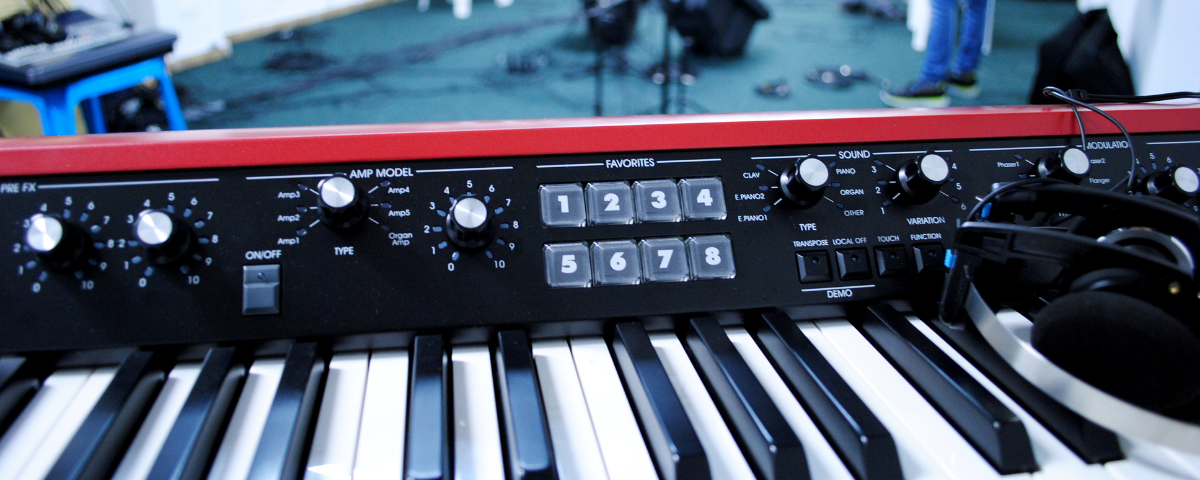
When it comes to making music, there are a lot of good reasons to get a synth. For starters, it’s a lot cheaper than buying a new keyboard, and it can do things that traditional keyboards can’t. It’s also portable, making it easier to take to rehearsals, competitions, or practice at home. Then there’s the sound many synths come packed with some pretty impressive virtual analog sound engines. Heck, maybe you’ve always wanted to get into making music, but you don’t know where to start.
A synth is a powerful tool that can take you from the humble beginnings of MIDI control to a powerful tool for making music. But, choosing a synth can be a daunting task. There are so many to choose from, and I’m going to walk you through the process of figuring out which synth is right for you.
Understanding Synthesizers
The synthesizer is one of the most iconic devices of all time, having been used in the 70s on the album art for the Beatles, in the 60s in the click track in James Bond films, and in the 50s in the musical instruments in movies. Synthesizers have also been used in pop bands to create music in many genres, including electronic. Synthesizers come in different shapes and sizes, and they all function in different ways.
Like many musical instruments, synthesizers produce sound by translating an input signal (usually an electric signal) into an output signal (usually an electronic signal). For example, the input signal for a synthesizer might be an acoustic signal that is then converted into an electronic signal.
What is a Synthesizer?
A synthesizer is a musical instrument that produces sound from audio signals via electronic circuitry. The signals can be audio from audio recording devices such as a microphone, a drum machine, a keyboard, a string section of a musical ensemble, the output of a sampler, a wind instrument, a tuning fork, a tuning slide, a signal from a drum machine or a light beam from a laser.
Different Kinds of Synthesizer:
Monophonic synthesizer; polyphonic synthesizer; semi-modular Synthanosizer; Digital-Analog Hybrid synthesizer; What is a Virtual Analog synthesizer; What is a Subtractive Synthesizer; Modular synthesizer; Semi-modular synthesizer; Drum Machine.
Synthesizers and samplers (sequencers) were very popular in the 80s and 90s, and for a good reason. They were used to creating unique, new-sounding instruments that blended elements of the human voice and human instruments. With a synthesizer, you can create instruments that sound unique and unique instruments that sound synthetic. A synthesizer is a device that creates sounds electronically by using oscillators and filters. Sounds can be created in many ways and can be used in many ways.
What to consider when choosing Your First Synthesizer
If you’re looking for your first synthesizer, you’re probably curious about what type to buy and how much it should cost. That’s understandable, but you should also think about how much time it will take to learn to use it properly. Synthesizers are complex machines that take some time to learn how to operate. If you start with a cheap synth that takes only a few hours to learn how to use, you may never learn to use it well. So, how much time do you need to learn to use the instrument? According to Synthesizers.org, the average synthesizer can be mastered in about five hours of practice-but that’s only if you’re serious about playing it.
For many musicians, the idea of getting into synth programming is daunting, especially if you are new to computers or programming in general. Some engineers may be intimidated by the idea of creating a software instrument, while others may feel lost with any idea of how to get started.
If you are looking to invest in a synthesizer, you are likely looking for a device that will provide you with the best sound, utility, and features – along with an array of organ benches that might make your experience even better. However, the first step is deciding how much money you are willing to spend.
Synthesizers are unique musical instruments that offer unlimited sounds, making them good choices for beginners looking to get into music. They are easy to use, learn, and program, but it is important to note that they can also sound “rubbery” and have a fairly limited sound palette. Given the price range you are looking at, availability of resources, and overall experience you hope to have with your first instrument, it is important to be well-prepared for what to expect.








